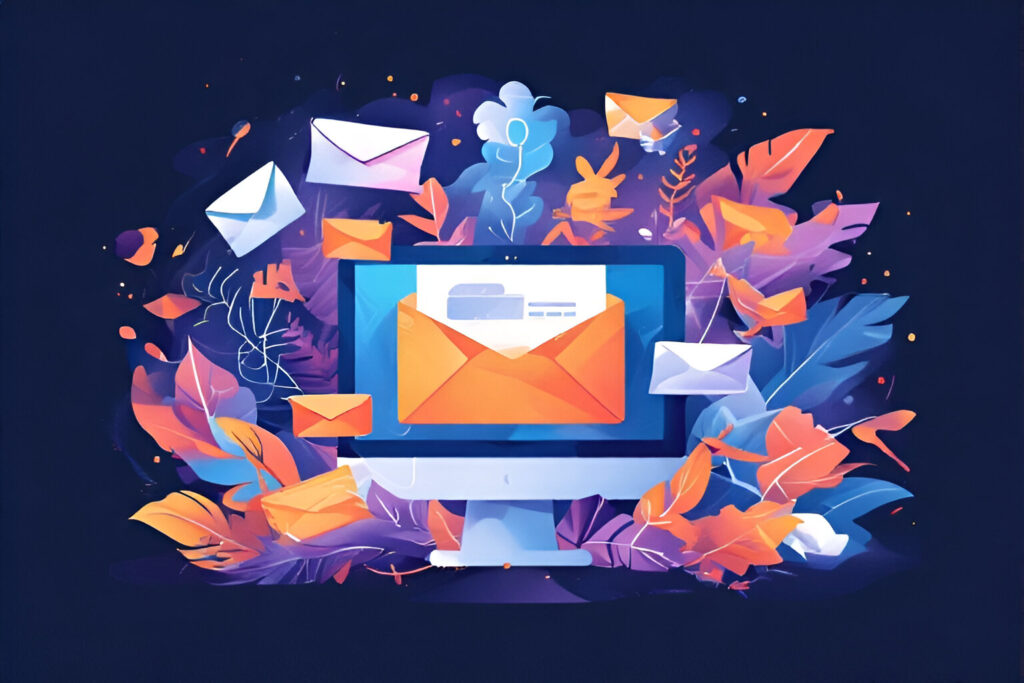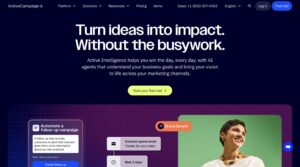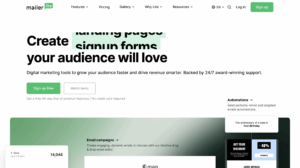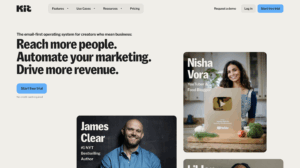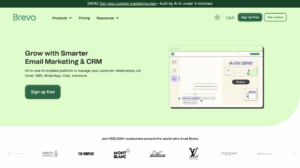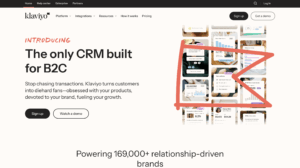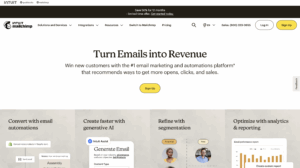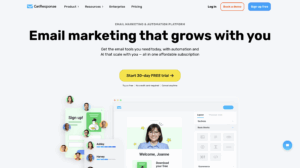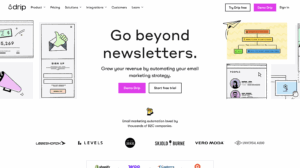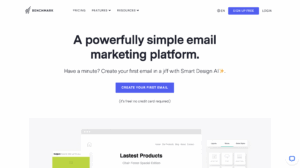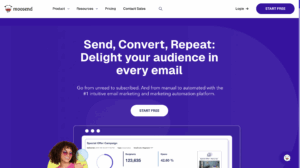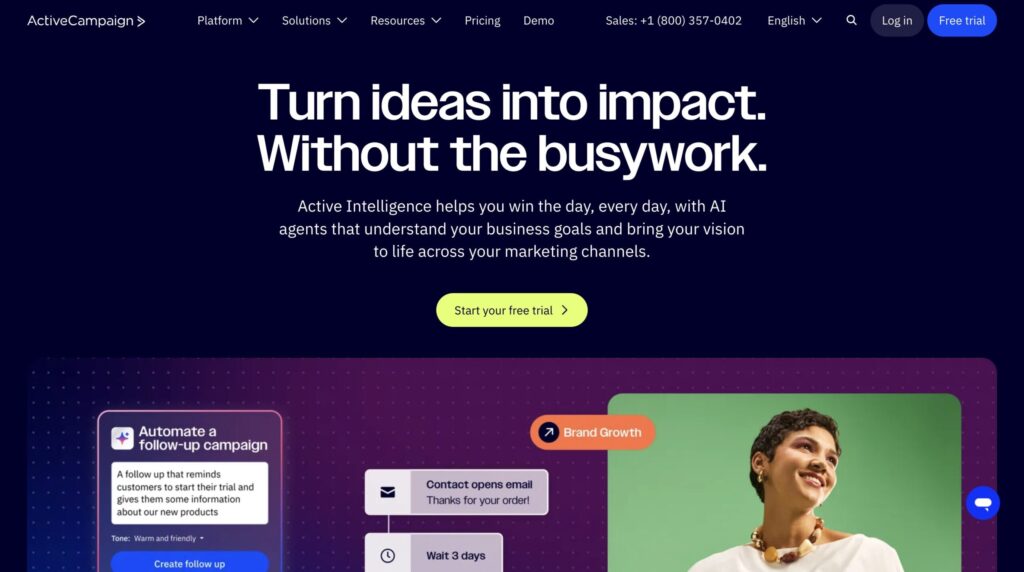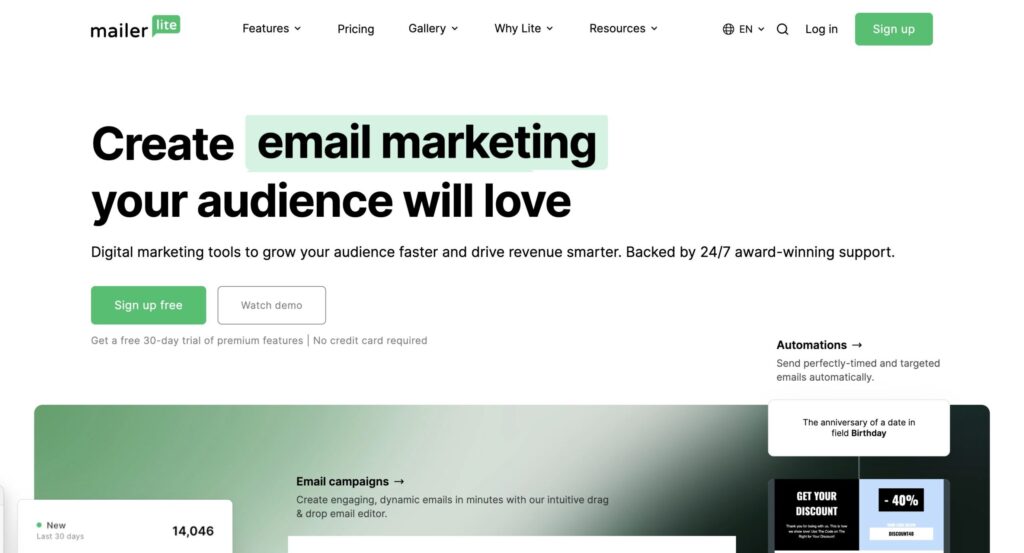Email marketing is far from outdated—in fact, in 2025, it’s more powerful and personalized than ever. With inboxes more crowded and consumers more discerning, having the right email marketing software can make or break your campaigns. Whether you’re a solopreneur building a list from scratch or a growing brand managing thousands of subscribers, your platform must be efficient, adaptable, and smart.
Modern email marketing tools now go beyond basic newsletters. They offer AI-driven automation, sophisticated segmentation, powerful integrations with eCommerce and CRM platforms, and detailed analytics to help you fine-tune every message. Choosing the right solution in today’s crowded marketplace can feel overwhelming—but this guide makes it easy.
In this comprehensive roundup, we’ll walk you through what to look for in email software, compare top platforms, and highlight our best picks for every type of user—from creators to eCommerce pros to enterprise teams.
Looking for email copy or newsletter management? We can help. Explore
What to Look for in Email Marketing Software in 2025
Choosing the right email marketing tool in 2025 means understanding how today’s platforms support smarter, more scalable campaigns. Here are the essential features to prioritize when evaluating software:
1. Ease of Use
Your email tool should offer an intuitive drag-and-drop editor, simple automation setup, and easy-to-navigate dashboards. A steep learning curve can slow your campaigns and frustrate your team.
2. Automation and AI Capabilities
Modern platforms come with AI-powered workflows that trigger emails based on user behavior—like abandoned cart reminders, welcome sequences, or re-engagement campaigns. Look for tools that let you build dynamic journeys without needing a tech background.
3. Segmentation and Personalization
The best email tools let you segment your list based on actions, preferences, purchase history, and more. Personalization boosts open rates and conversions by making your emails feel custom-built.
4. Deliverability Rates
A fancy platform means nothing if your emails land in spam. Prioritize services known for strong deliverability, verified sending domains, and reputation management tools.
5. CRM and Third-Party Integrations
Your email software should integrate easily with your website, eCommerce store (like Shopify or WooCommerce), CRM, and other marketing tools to ensure a seamless data flow.
6. Pricing and Scalability
Freemium tools are great for starting out, but as your list grows, pricing can skyrocket. Look for transparent pricing and tools that scale affordably as you expand.
7. GDPR and CAN-SPAM Compliance
Compliance is non-negotiable. Choose platforms that make it easy to include unsubscribe links, manage consent, and handle data securely.
8. Analytics and Reporting
Detailed insights into open rates, click-through rates, conversions, and unsubscribes help you iterate and improve. Bonus points for A/B testing features and predictive analytics.
Quick Comparison Table
Before diving into detailed reviews, here’s a snapshot of how the top email marketing platforms in 2025 compare at a glance. This chart summarizes key factors like pricing, use case, and standout features so you can quickly narrow your options.
| Tool | Starting Price | Best For | Key Features | Free Plan |
| ActiveCampaign | $29/month | Advanced automation & CRM users | Behavior-based automation, CRM, predictive email | No |
| MailerLite | Free up to 1,000 | Small businesses, freelancers | Drag-and-drop editor, automation, landing pages | Yes |
| ConvertKit | Free up to 1,000 | Creators & personal brands | Sequences, tagging, visual automation builder | Yes |
| Brevo (Sendinblue) | Free up to 300/day | All-in-one platform | Email/SMS, automation, live chat | Yes |
| Klaviyo | Free up to 250 | eCommerce brands | Deep Shopify/WooCommerce integrations, segments | Yes |
| Mailchimp | Free up to 500 | General purpose marketing | Templates, automation, analytics | Yes |
| GetResponse | $19/month | Funnels & webinars | Autofunnels, webinar hosting, email tools | No |
| Drip | $39/month | DTC & personalization | Dynamic segments, eCommerce automation | No |
| Benchmark Email | Free up to 500 | Multilingual campaigns | Multilingual support, drag-and-drop design | Yes |
| Moosend | $9/month | Budget-conscious marketers | Automation, list segmentation, A/B testing | No |
Note: Pricing and features as of Q2 2025. Always verify current details on the provider’s website.
The Best Email Marketing Tools in 2025: In-Depth Reviews
Now let’s take a closer look at the top email marketing software in 2025, broken down by their strengths, ideal users, and feature highlights.
1. ActiveCampaign – Best for Advanced Automation
Why It Stands Out:
ActiveCampaign is a powerhouse for businesses ready to scale. With robust automation workflows, built-in CRM functionality, and behavioral tracking, it’s built for teams that want serious control over personalization and timing.
Key Features:
- Predictive email sending and lead scoring
- CRM with sales automation
- Split testing and detailed reporting
- Over 900 integrations
Best For: Mid-size to large businesses, SaaS companies, agencies
Downsides: Steeper learning curve, no free plan
2. MailerLite – Best for Simplicity and Affordability
Why It Stands Out:
Perfect for freelancers, bloggers, and small businesses, MailerLite combines ease of use with powerful tools. The interface is clean, and features like landing pages and automations are included even on the free tier.
Key Features:
- Drag-and-drop email builder
- Automation, pop-ups, and landing pages
- A/B testing
- Excellent deliverability
Best For: Beginners, small businesses, creators
Downsides: Lacks deep CRM or advanced reporting
3. ConvertKit – Best for Creators and Solopreneurs
Why It Stands Out:
Built with creators in mind, ConvertKit offers intuitive automations, tagging, and email sequences that make nurturing a list simple and personal.
Key Features:
- Clean interface with visual automation builder
- Tagging-based segmentation
- Sell digital products and subscriptions
- Free migration assistance
Best For: Bloggers, coaches, authors, YouTubers
Downsides: Limited design options; slightly higher cost for advanced features
4. Brevo (formerly Sendinblue) – Best All-in-One Tool
Why It Stands Out:
Brevo combines email, SMS, live chat, and CRM tools into one platform, making it ideal for omnichannel marketers who want to manage everything in one dashboard.
Key Features:
- Email, SMS, and chat marketing
- Transactional emails and marketing automation
- Real-time analytics
- Pay-as-you-go pricing for SMS
Best For: Multi-channel businesses, service providers
Downsides: Daily send limits on free plan
5. Klaviyo – Best for eCommerce
Why It Stands Out:
Klaviyo dominates the eCommerce space, with native integrations for platforms like Shopify and WooCommerce and tools tailored to maximize sales through behavioral automation.
Key Features:
- Real-time tracking and predictive analytics
- Personalized product recommendations
- Revenue-focused reporting
- SMS capabilities
Best For: DTC brands, Shopify stores
Downsides: Can be expensive as lists grow
6. Mailchimp – Most Recognized Name in Email Marketing
Why It Stands Out:
Mailchimp remains a go-to option for many thanks to its wide recognition and ease of use. It offers strong features across email marketing, basic automation, landing pages, and analytics.
Key Features:
- Pre-built email templates
- Automation and customer journeys
- Basic CRM and segmentation
- Smart recommendations for content and send times
Best For: Small to medium businesses, general users
Downsides: Pricing jumps significantly as your list grows; limited support on free plan
7. GetResponse – Best for Funnels and Webinars
Why It Stands Out:
More than just email marketing, GetResponse offers webinar hosting, sales funnels, and landing page tools, making it a powerful all-in-one solution for info products and lead generation.
Key Features:
- Funnel builder (autofunnels)
- Webinar hosting
- Conversion-focused landing pages
- Behavior-based segmentation
Best For: Online educators, digital product sellers, coaches
Downsides: Interface can feel a bit dated; less beginner-friendly
8. Drip – Best for Personalization and Direct-to-Consumer Brands
Why It Stands Out:
Drip is designed for eCommerce brands that need deep segmentation and automation. Its tagging and behavior-based workflows help maximize customer lifetime value.
Key Features:
- Advanced tagging and segmentation
- Visual workflows
- Dynamic content based on user behavior
- Shopify, WooCommerce, and BigCommerce integrations
Best For: DTC brands, high-growth eCommerce stores
Downsides: Premium pricing; not ideal for beginners
9. Benchmark Email – Best for Global Campaigns
Why It Stands Out:
Benchmark Email excels at multilingual and global campaigns, with easy-to-use design tools and collaboration features for teams working across borders.
Key Features:
- Email builder with real-time collaboration
- GDPR and international compliance tools
- Responsive design across devices
- A/B testing and list hygiene tools
Best For: International teams, agencies, nonprofits
Downsides: Some automation features less advanced than competitors
10. Moosend – Best for Value and Performance
Why It Stands Out:
Moosend is an underrated gem for budget-conscious businesses. It includes many advanced features at a lower price point, including marketing automation, personalization, and real-time analytics.
Key Features:
- AI-powered recommendations
- Rich automation and workflows
- Real-time analytics and reporting
- List segmentation and A/B testing
Best For: Startups, small businesses, budget-focused marketers
Downsides: Smaller app ecosystem; customer support could be improved
Choosing the Right Email Marketing Software for Your Business
With so many excellent platforms available, choosing the right email marketing software depends on your specific business needs, goals, and growth stage. Here’s how to evaluate your options:
Identify Your Primary Goals
Ask yourself:
- Do you want to automate nurturing through complex workflows?
- Are you focused on selling products via email (especially eCommerce)?
- Is lead generation through landing pages and forms a top priority?
- Do you need CRM integration or an all-in-one platform?
Your goals will quickly eliminate platforms that don’t align.
Consider Your Business Type and Size
- Solopreneurs and freelancers may prefer simplicity and affordability (e.g., MailerLite, ConvertKit).
- Agencies or service businesses may need CRM features and segmentation (e.g., ActiveCampaign, Brevo).
- eCommerce brands will benefit from revenue-focused features (e.g., Klaviyo, Drip).
- Educators or coaches might lean toward webinar and funnel tools (e.g., GetResponse).
Evaluate Key Features That Matter to You
Here are essential features to compare:
| Feature | Why It Matters |
| Automation Builder | Save time and personalize customer journeys |
| Segmentation & Tagging | Send relevant messages to the right people |
| CRM or Contact Management | Track leads and manage relationships |
| A/B Testing | Improve open and conversion rates over time |
| Reporting & Analytics | Understand what’s working and optimize campaigns |
| Landing Pages/Forms | Boost list-building efforts without third-party tools |
| Support & Learning | Help you get up and running fast |
Review Your Budget and Scalability
- Some platforms offer free tiers, but scale pricing quickly (e.g., Mailchimp, Brevo).
- Others offer predictable pricing but fewer features (e.g., Moosend).
- Check how pricing evolves as your subscriber list grows, and whether features are locked behind higher plans.
Pro tip: Always calculate the cost per subscriber over time — not just the base monthly fee.
Don’t Forget About Deliverability
A platform’s deliverability rate — how often emails make it to inboxes rather than spam folders — is a make-or-break factor. Look for:
- Verified IP reputation
- Custom domain authentication (SPF, DKIM)
- Clean list practices and bounce management
Top performers in deliverability often include MailerLite, ActiveCampaign, and ConvertKit.
Tips for Maximizing Results from Your Chosen Email Tool
Choosing the right software is only step one. To dominate your niche and drive consistent ROI from email marketing, you need to use the tool effectively. Here’s how to get the most out of your email marketing platform:
Focus on List Building from Day One
- Create multiple opt-in points on your website (sidebar, pop-ups, exit intent).
- Offer lead magnets like checklists, free trials, or exclusive content to encourage sign-ups.
- Use landing pages or embedded forms to collect leads from social media or paid ads.
Pro tip: Integrate your forms with your CRM or automation workflows for seamless follow-up.
Use Segmentation to Send Smarter Emails
Sending the same email to your entire list is a missed opportunity. Use segmentation to:
- Group subscribers by interest, behavior, or purchase history.
- Send targeted offers to warm leads vs. cold ones.
- Re-engage inactive users with personalized content.
The more relevant your emails, the better your open and conversion rates.
Build Automated Email Workflows
Automations save time and drive results 24/7. Common workflows include:
- Welcome series for new subscribers
- Abandoned cart reminders for eCommerce
- Lead nurturing sequences based on behavior
- Re-engagement campaigns for inactive contacts
Most platforms let you build visual workflows—don’t be afraid to start small and optimize.
A/B Test Everything
Successful email marketers don’t guess—they test. Consider experimenting with:
- Subject lines and preview text
- Email content length or format (plain text vs. rich HTML)
- CTA button placement and copy
- Send times and days
Use the built-in analytics to refine what resonates with your audience.
Maintain List Hygiene
An engaged list outperforms a large but cold one. To keep your list healthy:
- Remove or re-engage inactive subscribers
- Regularly validate emails to reduce bounce rates
- Use double opt-ins for higher-quality sign-ups
This boosts deliverability, protects your sender reputation, and improves ROI.
Track the Right Metrics
Go beyond open and click rates. Monitor:
- Conversion rates (what’s actually bringing in revenue?)
- Bounce and unsubscribe rates (is your content aligned with expectations?)
- ROI per campaign or segment
- Lifetime value of email-acquired customers
Advanced tools like Klaviyo or Drip can even connect email actions with sales data.
Conclusion: Choose the Best Email Marketing Tool to Fuel Growth in 2025
In today’s crowded digital landscape, email remains one of the highest-ROI channels for online businesses—and the right software can be the difference between mediocre results and scalable success.
Whether you’re nurturing leads, launching products, or building an engaged audience, platforms like MailerLite, ActiveCampaign, ConvertKit, and Brevo give you the tools to do it efficiently and effectively.
As you weigh your options:
- Focus on your goals, not just feature lists.
- Choose a tool that supports your business model and growth stage.
- Prioritize automation, segmentation, and analytics to make every email count.
Once you’ve chosen your platform, success comes from consistency, testing, and delivering real value to your audience.
Ready to Take Your Email Strategy to the Next Level?
Our team of expert copywriters helps businesses like yours craft email sequences that convert—using the platform that fits your goals best.
→ Contact us today to learn how we can help you maximize your email marketing ROI.
